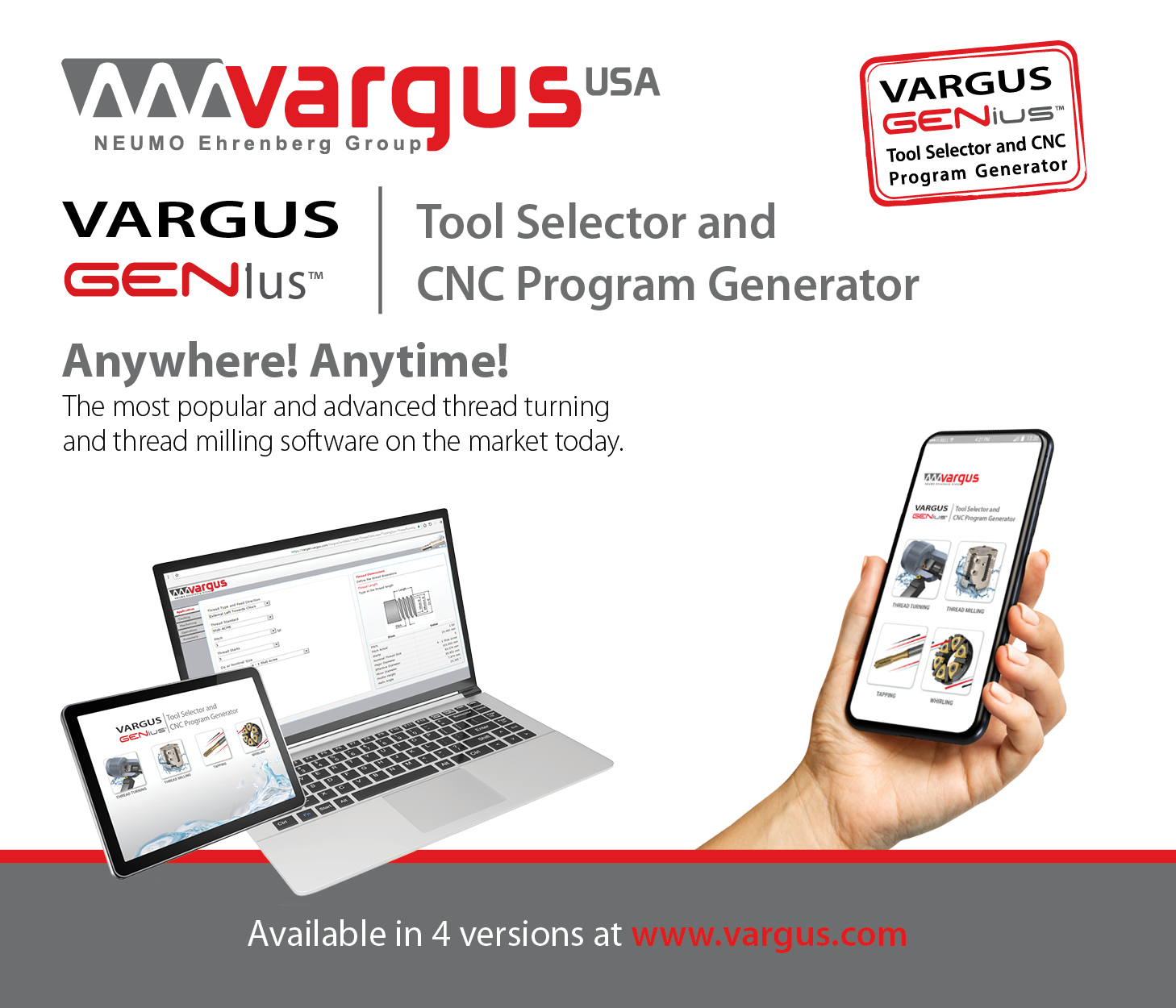
CAM technology helps drive standardization initiative
In supporting phase one of the DMG/Mori Seiki standardization initiative, Gibbs and Associates will provide the machine tool builder’s customers a smooth and reliable flow of programming data from any CAM system to the machine control. The Moorpark, Calif., company is the developer of GibbsCAM software for programming CNC machine tools. This work will enable full use of machine and control features without the need for custom post-processors and machine-simulation models. The technology is based on DMG/Mori Seiki’s implementation of the standard automatically programmed tool (APT) language, with DMG/Mori Seiki extensions that are supported within GibbsCAM. The machine builder’s initial focus during phase one is on its 3- and 5-axis machining centers and controls, with an eventual goal of enabling the technology for all its machines.
Currently, when end users purchase a new CNC machine or new CAM package for use with an existing CNC machine, they must work with the machine tool vendor and CAM provider to implement a custom post-processor and machine-simulation model to fully program and simulate a machine’s capabilities. In this new approach, the CAD/CAM vendor outputs DMG/Mori Seiki-specific APT data and DMG/Mori Seiki provides a post-processor and simulation package for the CNC machine, thereby eliminating the need for each CAM provider to develop a custom post-processor and machine model. With this approach, users can start producing parts immediately on their DMG/Mori Seiki machines.
www.gibbscam.com; (805) 523-0004

Application for calculating grinding parameters
Saint-Gobain Abrasives Inc., Worcester, Mass., offers the free Norton Abrasives app for performing grinding calculations. It includes three calculators: wheel-speed conversion, coolant parameters and dressing parameters. The app also features a right-angle grinding product selector and a distributor locator. With the app, users can also link to the company’s Web site to find and order products and check orders and product availability.
“With the increasing use of hand-held digital technology, we are pleased to offer our customers a convenient, simple-to-use grinding app,” said David Long, director of marketing and strategy at Norton Abrasives. “The app is designed for manufacturers to quickly simplify the process of calculating the requirements for their grinding application.”
The app is available for IOS and Android operating systems on mobile devices.
www.nortonindustrial.com/GrindingCalculationApp.aspx; (508) 795-2183

Workholding system for 4- and 5-axis machining
Center Ossipee, N.H.-based Mitee-Bite Products LLC’s Loc-Jaw workholding system is for 4- and 5-axis machining and requires no workpiece material preparation. The rails and gripper towers are serrated to provide a solid and adjustable base. The workholder has an adjustable clamping range of 0.5 " to 4.0 ", is capable of penetrating 0.060 " deep per gripper and produces more than 6,000 lbs. of holding force. The low-profile grippers hold 0.100 " of the workpiece. This allows full access to all work surfaces, including the bottom face. The base adapts to most machine tables with a bore provided for a centering disc. A support bolt reinforces the gripper towers for rigidity and increased workholding capacity, according to the company.
www.miteebite.com; (800) 543-3580

Filter removes fine particulate from spent oil
The Candle Filter from PRAB, Kalamazoo, Mich., removes particles as fine as 1µm from spent oil when shops are grinding tungsten-carbide tools and steel bearings, honing and EDMing. The filter uses a permanent media in a long cylinder that houses more than 10,000 thin-membrane wafers. A self-cleaning, air-driven backwash system automatically clears dirt and debris from the filter. This allows reliable filtration during long production runs, according to the company. The filter purges swarf and oil into an external receptacle for collection and recycling. An optional chiller keeps the fluid temperature relatively constant, varying 1° to 3° F.
www.prab.com; (800) 968-7722

Grinding machine produces PCD inserts
Machine Control Technologies Inc., Corona, Calif., offers the 5-axis MCTSamatic 5000I CNC PCD grinder, with 8-axis freedom of movement, for producing PCD-tipped inserts and rotary tools. It is built on a steel base with a 6 "-thick granite top for damping and equipped with an automatic measuring system. The rotary axis can swivel 270° around the rotary center to provide a wide grinding angle. The grinder has built-in macro programs for producing radii, chamfers and relief angles. The conversational programming menu enables users to fill in tool grinding information without the need for expensive grinding software to run the machine, according to the company. The machine costs $138,000 without the optional autoloader, which can load different workpiece sizes and shapes.
www.machinecontroltechnology.com; (714) 952-4622

GenSwiss introduces through-coolant toolholders
Multidec 3000 through-coolant toolholders from Genevieve Swiss Industries Inc., Westfield, Mass., eliminate the need for solid coolant delivery lines. The holders direct a coolant stream at the cutting edge of 3000 series inserts, providing longer tool life and optimal lubrication and cooling, according to the company. The holders are for pressures higher than 2,000 psi and are available in standard ½ " and 5/8 " square-shank sizes. Specials can be ordered. Two coolant inlet ports suit specific machine tool configurations. The holders also eliminate the need for a custom gang plate and the installation of a coolant manifold, according to the company.
www.genswiss.com/multidec_cut_3000_holders.htm#CoolThru; (413) 562-4800
Related Glossary Terms
- centering
centering
1. Process of locating the center of a workpiece to be mounted on centers. 2. Process of mounting the workpiece concentric to the machine spindle. See centers.
- centers
centers
Cone-shaped pins that support a workpiece by one or two ends during machining. The centers fit into holes drilled in the workpiece ends. Centers that turn with the workpiece are called “live” centers; those that do not are called “dead” centers.
- computer numerical control ( CNC)
computer numerical control ( CNC)
Microprocessor-based controller dedicated to a machine tool that permits the creation or modification of parts. Programmed numerical control activates the machine’s servos and spindle drives and controls the various machining operations. See DNC, direct numerical control; NC, numerical control.
- computer-aided manufacturing ( CAM)
computer-aided manufacturing ( CAM)
Use of computers to control machining and manufacturing processes.
- conversational programming
conversational programming
Method for using plain English to produce G-code file without knowing G-code in order to program CNC machines.
- coolant
coolant
Fluid that reduces temperature buildup at the tool/workpiece interface during machining. Normally takes the form of a liquid such as soluble or chemical mixtures (semisynthetic, synthetic) but can be pressurized air or other gas. Because of water’s ability to absorb great quantities of heat, it is widely used as a coolant and vehicle for various cutting compounds, with the water-to-compound ratio varying with the machining task. See cutting fluid; semisynthetic cutting fluid; soluble-oil cutting fluid; synthetic cutting fluid.
- dressing
dressing
Removal of undesirable materials from “loaded” grinding wheels using a single- or multi-point diamond or other tool. The process also exposes unused, sharp abrasive points. See loading; truing.
- grinding
grinding
Machining operation in which material is removed from the workpiece by a powered abrasive wheel, stone, belt, paste, sheet, compound, slurry, etc. Takes various forms: surface grinding (creates flat and/or squared surfaces); cylindrical grinding (for external cylindrical and tapered shapes, fillets, undercuts, etc.); centerless grinding; chamfering; thread and form grinding; tool and cutter grinding; offhand grinding; lapping and polishing (grinding with extremely fine grits to create ultrasmooth surfaces); honing; and disc grinding.
- grinding machine
grinding machine
Powers a grinding wheel or other abrasive tool for the purpose of removing metal and finishing workpieces to close tolerances. Provides smooth, square, parallel and accurate workpiece surfaces. When ultrasmooth surfaces and finishes on the order of microns are required, lapping and honing machines (precision grinders that run abrasives with extremely fine, uniform grits) are used. In its “finishing” role, the grinder is perhaps the most widely used machine tool. Various styles are available: bench and pedestal grinders for sharpening lathe bits and drills; surface grinders for producing square, parallel, smooth and accurate parts; cylindrical and centerless grinders; center-hole grinders; form grinders; facemill and endmill grinders; gear-cutting grinders; jig grinders; abrasive belt (backstand, swing-frame, belt-roll) grinders; tool and cutter grinders for sharpening and resharpening cutting tools; carbide grinders; hand-held die grinders; and abrasive cutoff saws.
- machining center
machining center
CNC machine tool capable of drilling, reaming, tapping, milling and boring. Normally comes with an automatic toolchanger. See automatic toolchanger.
- polycrystalline diamond ( PCD)
polycrystalline diamond ( PCD)
Cutting tool material consisting of natural or synthetic diamond crystals bonded together under high pressure at elevated temperatures. PCD is available as a tip brazed to a carbide insert carrier. Used for machining nonferrous alloys and nonmetallic materials at high cutting speeds.
- relief
relief
Space provided behind the cutting edges to prevent rubbing. Sometimes called primary relief. Secondary relief provides additional space behind primary relief. Relief on end teeth is axial relief; relief on side teeth is peripheral relief.
- swarf
swarf
Metal fines and grinding wheel particles generated during grinding.
- web
web
On a rotating tool, the portion of the tool body that joins the lands. Web is thicker at the shank end, relative to the point end, providing maximum torsional strength.



